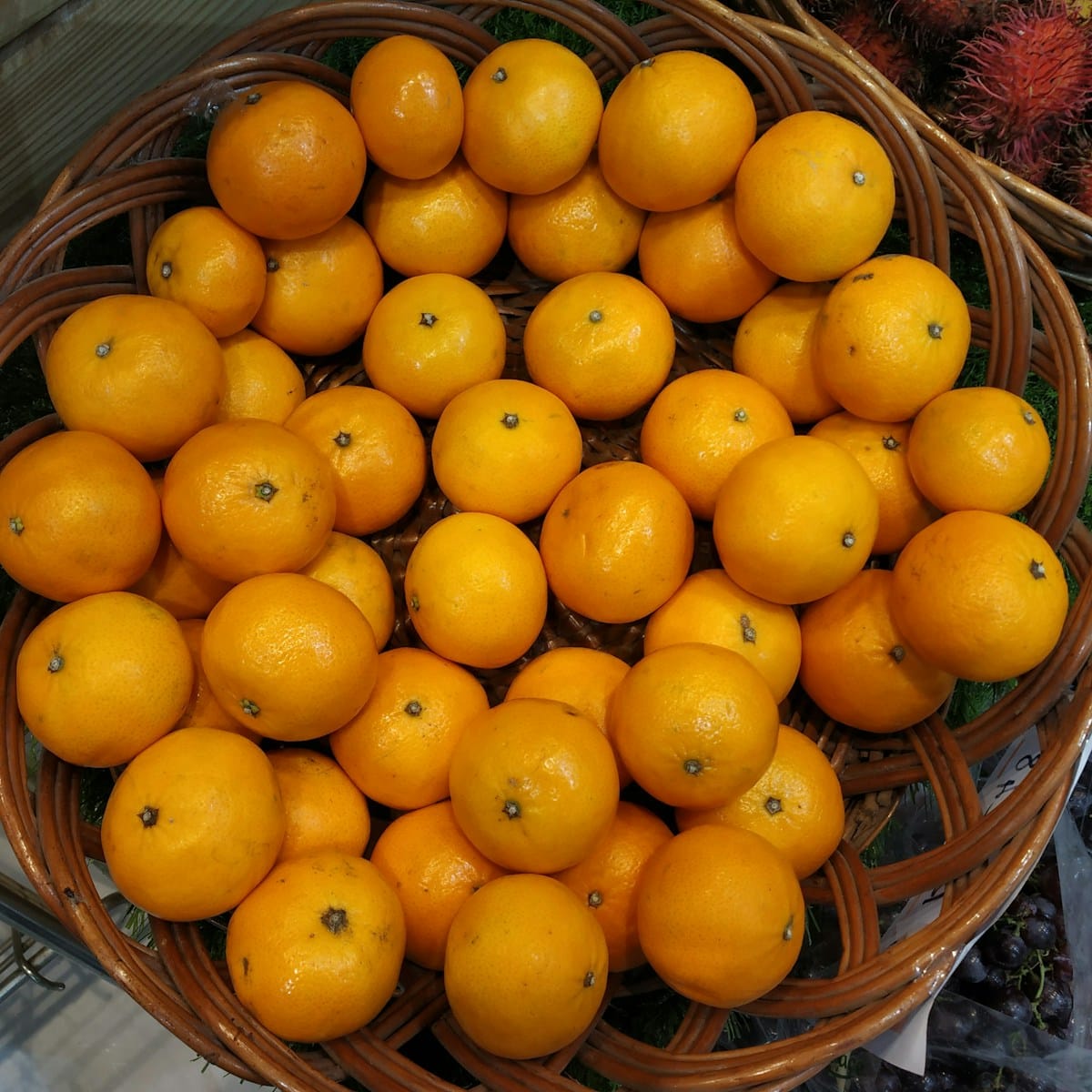In the vibrant world of seasonal fruits, persimmons stand out with their rich flavors, vibrant hues, and nutritional benefits. As the world becomes increasingly health-conscious, it’s time to explore these less-traveled avenues of nature’s bounty. Whether you are a culinary enthusiast or a curious taster, understanding the difference between Fuyu and Hachiya persimmons can enhance your fruit experience immensely. These two varieties of the persimmon tree offer distinct flavors, appearances, and uses. Let’s dive into this juicy exploration and unpack everything you need to know about these exotic and delicious fruits.
Understanding the Persimmon Fruit
Persimmons have been cherished for centuries, especially in Japanese cuisine, for their sweet taste and diverse uses. This fruit, which turns an enticing shade of orange or red when ripe, hails from the Diospyros genus—meaning “divine fruit.” Persimmons are classified into various species, but among them, the Fuyu and Hachiya are the most popular.
Unlike many common fruits, the persimmon requires special attention to its ripening process. The Hachiya variety is particularly known for its astringent properties when unripe, which can leave you with an unpleasantly dry mouth. On the other hand, the Fuyu variety is less astringent and can be enjoyed while still firm, making it a delightful snack straight off the tree.
Nutritional Benefits
Persimmons are not just a feast for the taste buds but are also packed with essential nutrients. They are a great source of vitamin A, vitamin C, and fiber. Consuming persimmons can support healthy vision, boost the immune system, and promote digestive health. With their natural sweetness, they serve as an excellent alternative to processed sugars in desserts and snacks.
The Appearance
The Fuyu persimmon is squat and round, retaining its crisp texture longer, whereas the Hachiya is elongated and pointed, softening significantly as it ripens. The vibrant hues of these fruits are often complemented by their contrasting black seeds nestled inside.
Diving into Fuyu Persimmons
Fuyu persimmons are beloved for their non-astringent nature, making them the go-to choice for those new to the persimmon experience. With a shape akin to a beefsteak tomato, Fuyus are plump and easy to handle. Their flesh is crisp and sweet, making them versatile enough to be eaten raw or incorporated into various recipes.
Culinary Uses
Fuyu persimmons shine in salads, where their crisp texture pairs beautifully with white cheeses like feta or goat cheese. They’re also perfect for adding sweetness to savory dishes, offering a unique flavor profile that dances between a sweet apple and a mild pumpkin.
For a modern twist, try incorporating Fuyus into smoothies or baking them into pastries. When roasted, they take on a caramelized flavor that’s both rich and satisfying.
Growing Your Own
If you’re considering cultivating your own persimmon tree, Fuyu might be the best starting point. Unlike its counterpart, it tolerates a wider range of climates and is less susceptible to pests. Plant your tree in a sunny spot with well-drained soil, and you’ll enjoy its fruits for years to come.
HACHIYA VS. FUYU: Preparation
Lastly, due to how these varieties differ in their astringency, the way they are prepared and eaten is also quite different.
Fuyu persimmons, can be eaten when firm or soft and will be crisp and sweet. Fuyus can be enjoyed raw on their own or sliced and added to salads, sliced and roasted for a sweet and savory side dish or blended into smoothies.
Hachiya persimmons, must be incredibly soft before you eat them (remember – you want the fruit to feel like a water balloon). Many folks, after waiting until their hachiyas are very, very ripe, dig in to the fruit’s creamy interior simply with a spoon and eat it plain or mix it in to yogurt or oatmeal for some added sweetness. Because of a perfectly ripe hachiya persimmon’s texture, they are good for in baked goods like muffins, cookies and breads.
Hachiya Persimmons
Hachiya persimmons are the other side of the persimmon coin, known for their sweet taste once ripe. However, patience is key, as this variety is highly astringent until it reaches peak ripeness, which is when it becomes soft and jelly-like.
Culinary Uses
Once soft, Hachiya persimmons are perfect for baking, lending their sweet and luscious character to breads, cookies, and puddings. Their rich, honeyed flavor can be an unexpected delight to those willing to wait for their full maturation.
For a traditional approach, try using Hachiya in Japanese dishes, like persimmon pudding or sliced thinly and served with a dollop of sweetened cream. Their natural sweetness and bright color can elevate any dessert platter.
Growing Challenges
Growing Hachiya persimmons requires a bit more care. They thrive in warm climates and need a longer growing season to reach maturity. While they can be more of a challenge, the reward of harvesting your own soft, sweet fruits is worth the effort.
Flavor Profile
As they ripen, Hachiya persimmons develop a deep red or orange color, with a texture that turns almost like a jelly. Their flavor is unparalleled—something akin to a blend of apricot and honey, with a hint of spice.
Choosing the Right Persimmon for You
The decision between Fuyu and Hachiya often boils down to personal preference and intended culinary use. Each variety brings something unique to the table, offering different experiences for those who enjoy the journey of taste.
Consider Your Palette
If you prefer a sweet, crisp fruit that can be enjoyed fresh, then Fuyu is your best bet. Its ability to be consumed at various stages of ripeness makes it a versatile option for snacks and dishes.
Alternatively, if you’re drawn to rich, complex flavors and enjoy the art of dessert-making, Hachiya persimmons will likely fit the bill. Their luscious texture and depth of flavor make them a staple in baking and traditional Japanese cuisine.
Availability and Seasonality
Persimmons are a seasonal delight, typically harvested in the late fall. While both varieties can often be found in grocery stores during this time, local farmers’ markets might offer the freshest selection.
As you navigate the world of persimmons, remember that both Fuyu and Hachiya provide unique benefits and experiences. With their vivid colors and delightful tastes, they hold the potential to transform your understanding and appreciation of fruits.
The Final Bite
Ultimately, whether it’s the firm, snackable Fuyu or the soft, dessert-friendly Hachiya, incorporating persimmons into your diet can be a refreshing and nutritious choice. So, the next time you see these vibrant gems at your local market, embrace the opportunity to explore the distinct and delightful world of persimmons.
In our exploration of the Fuyu and Hachiya persimmons, it becomes clear that both varieties boast individual charm and culinary potential. Selecting the right persimmon depends on personal taste and recipe goals, yet the common thread is the shared delight they bring to the table.
As you journey through seasonal produce aisles, we encourage you to embrace the persimmon experience. Whether it’s the crunchy bite of a Fuyu or the creamy indulgence of a Hachiya, these fruits promise to enliven your palate and enrich your dietary repertoire. Let’s celebrate the orange wonders that nature offers and savor each moment of this unique fruit adventure.

